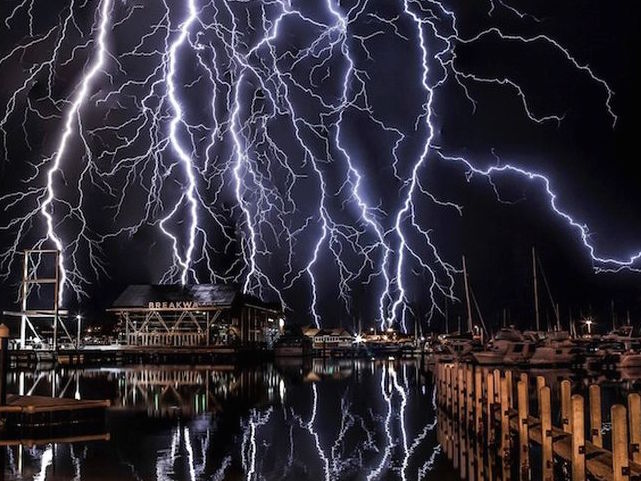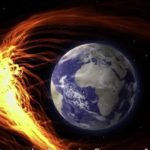Solar Activity Could Cause Lightning Storms On Earth
A link has been found between storms in the atmosphere of the sun and those here on Earth, but not in the direction expected. The discovery could improve weather forecasting and save the lives of people who might otherwise be trapped in the open during electrical events.
The sun spits out charged particles that hit our atmosphere two to four days later at 1.5-.2.7million kph, but it does not do so evenly. “The solar wind is not continuous, it has slow and fast streams. Because the Sun rotates, these streams can be sent out behind each other – so if you have a fast solar wind catching up with a slow solar wind, it causes a concentration to occur,” says Dr Christ Scott of the University of Reading. The slow phase is composed similarly to the solar corona while fast particles have a composition close to that of the photosphere, the outer layer of the sun that produces the light.
The arrival of bursts of particles trigger the aurora borealis and australis, but Scott has found a correlation with lightning strikes as well, revealed in Environmental Research Letters. The connection may not been spotted before because electrical activity can last for more than a month after the arrival of a large dose of particles.
Scott found a 31% increase in average lightning strikes over central England (422 to 321) in the 40 days after major solar wind events compared to the days beforehand. Lightning peaked 12-18 days after the wind’s arrival. A matching increase in thundery days provided supporting evidence. Since satellite observations can pick up the conditions for such events weeks beforehand there is potential for long term forecasting of when the danger of lightning is highest.
“It’s unexpected,” Scott told the BBC. “Because these streams of particles bring with them an enhanced magnetic field – and this shields Earth from the very high-energy cosmic rays from outside of the Solar System.” The reduction in cosmic rays is only around 1%, but still noticeable. Cosmic rays emitted by supernovae are thought to trigger lighting strikes, and it was expected that the shielding effect of the solar wind would cause a reduction in lightning, rather than an increase. The solar wind particles, while more numerous, are also lower energy than those from cosmic rays, and therefore not as likely to have trigger the cascade of runaway electrons thought to link cosmic rays to lightning. Moreover, past studies have found sunspot numbers negatively correlate with thunder days in other parts of the world.
If the relationship can be settled the implications are significant. Lightning is estimated to cause 24,000 deaths and ten times as many injuries each year worldwide. Even a small improvement in our capacity to predict it could save lives.
High speed streams were found to occur after periods when the sun was putting out less light, but sunspot numbers increased. Scott and his fellow authors attribute this to the streams coming from an active region appearing on the eastern side of the sun.
In addition to these puzzles Scott says we have plenty to learn about how solar energetic protons (SEPs) interact with the atmosphere. “We propose that these particles, while not having sufficient energies to reach the ground and be detected there, nevertheless electrify the atmosphere as they collide with it, altering the electrical properties of the air and thus influencing the rate or intensity at which lightning occurs,” Scott said.
Inevitably those who deny human involvement in climate change will seize on the findings as evidence that warming is driven by changes in the sun. However, such claims have been comprehensively refuted on numerous occasions. Sun spots and solar flares experience a strong 11 year cycle. If these, or anything correlating with them, were the major drivers of planet-wide temperature changes we would see a much stronger pattern over this cycle than we do.





